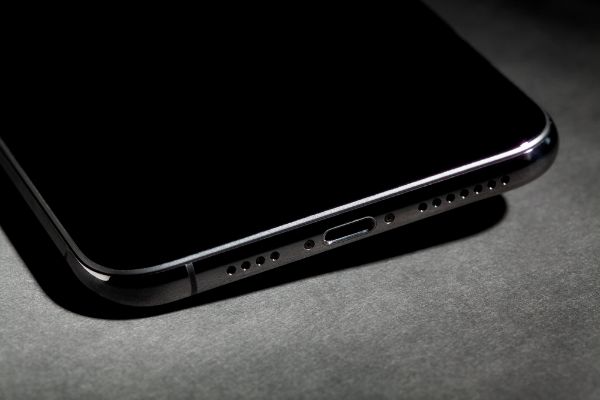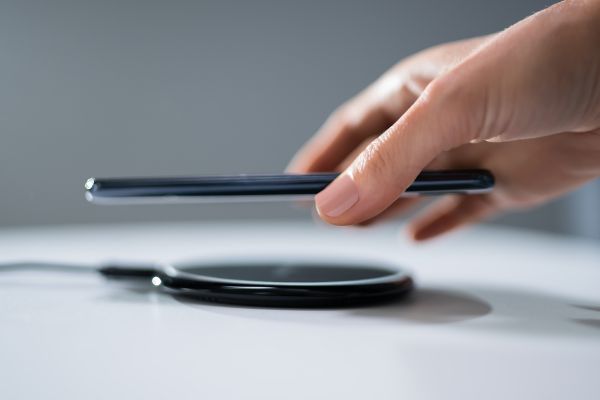Disclaimer: This post may contain affiliate links, meaning we get a small commission if you make a purchase through our links, at no cost to you. For more information, please visit our Disclaimer Page.
These days, many of the devices we use for both business and entertainment purposes run on batteries. Even the most sophisticated smartphones or high-end laptops need good batteries in order to give us the performance that we want to have, and most of us appreciate being able to plug in a device at night and find that it has a new, full charge in the morning.
Although batteries have come a long way since their early days in old radios or children’s toys, the charging process is still one that takes time and a good physical connection to a power source. Everything that we use today that relies on such power has a dedicated port to give it a wired connection, and the health of this port is integral to getting a good charge out of the device.
Unfortunately, some charging ports can and do break with defects or misuse. However, the signs of this kind of trouble are not always obvious to the end user. In order to clear up some of the confusion, we will try to address the topic of charging ports breaking or failing over time. Once we get into it, we can troubleshoot some of the major signs that there might be a defect in the charging ports on devices you are using.
As we discover some of these things, we can also look at some of the known causes that contribute to charging ports taking damage or breaking, too. Furthermore, we will discuss whether charging ports are something that you or a technician can fix, and we’ll check out a physical port’s relationship to wireless charging.
Table of Contents
How Do I Know if My Charging Port Is Damaged or Defective? 4 Signs
The charging port is a small thing on most devices, and it is so integrated into the structure of a phone or tablet that it can be hard to see where or how it took any damage. In fact, it could look fine, but there might be problems going on inside it.
Being able to track down the root cause of this issue can be the key you need in order to fix your charging woes. Although our list may not be complete with every single possible sign that a charging port has a problem, we have compiled some of the most likely things. Here are some of the physical issues you can look for in your own charging ports:
1. The port might be too loose to charge the device. This is one of the issues we mentioned that could be hard to see or treat. If you plug your device in, and if you are using a cable of the appropriate size and form factor, it should make a tight connection with the port.
If you can wiggle the end of the cable a lot, the port inside the device might be loose. Additionally, if you must hold the device at a certain angle to get it to charge, or if you need to put pressure on the cable to accomplish the same goal, you might be looking at a charging port that is loose.
2. When you plug and unplug your phone from a charger, the end of the cable makes connections with tiny pins inside the port. Constant unplugging that is not level or straight enough could cause the pins inside the port to bend. If they do, it may become impossible for you to charge the device properly.
Unfortunately, bent pins can be harder for you to diagnose, and this issue typically means you’ll need to disassemble the phone to check it out. If you suspect bent pins, we recommend taking your device to a qualified technician.
3. Try the same cable and adapter with other compatible devices, if you have any. Should the same accessories work for different things you have, it points to a problem with the device in question.
This may not be a charging port issue, but it is definitely one of the more likely causes of the unit failing to take and keep a charge from the same cables that work elsewhere.
4. If you get no battery charging icon to appear on your device, it seems likely that there is a problem with the port making a good connection between the main power and the device itself.
What Causes a Charging Port To Break? 4 Causes
Knowing some of the most typical ways a charging port might break could help you avoid damage to the devices of your choosing in the future. Before we get into some of the tangible causes, we should remember that technology can sometimes fail without an apparent cause.
Some hardware in a device just gets too old to keep up. Most manufacturers put minimum life spans in their warranties for this reason. In other cases, there could be a cause for failure that even a technician might not be able to figure out for you.
Outside of defects from the time when the device left the factory, which can be cause enough for failure down the line, the technology in the devices we use today can be delicate. All that is to say, you may not always get an answer as to why yours stopped working. However, here are some of the common causes that can affect charging ports and their functionality:
1. Repeated thermal stress over long periods of time can damage the port. There is little way around this, because the port is under at least some thermal stress whenever you need to repeat the charging cycle.
However, most ports should be able to handle this level of stress for many years, barring any other defects or problems they may have.
2. Along with the thermal stress, there is always a small amount of movement in the tiny pins that are inside the charging port. Developers solder each pin into the port.
With the small movements happening repeatedly over time, and thermal stress also going on at the same time, the joints in these pins can crack and break. This issue would affect the charging port, and likely make it so that the device could not take a charge from the cable anymore.
3. Although it is not as common, corrosion can happen if your device takes on excess moisture regularly. The charging port is an entry point into the device, and that includes water. Liquids and the internal hardware components don’t mix well, and corrosion can occur.
This is particularly true if you do not notice that water is getting in, and it may sit inside for a long time. Typically, corrosion does take a long time to build up, so it can be difficult for users to notice it.
4. Dirt or debris could interfere with the port’s ability to take on a charge. However, this sort of thing doesn’t necessarily break the port itself. If you have a small, intense light, you can try to see inside the port to check for any kind of detritus. There are ways you can blow this debris out of the port, and doing so may help you to restore its functionality.
Can a Charging Port Be Fixed?
In some cases, you may be able to fix a charging port that has some damage to it. However, the success of this job depends on what kind of damage it is. For the debris that we mentioned in the section above, the problem should be temporary.
As we talked about, getting rid of the obstructions should return the port to normal, although there may be other issues going on with it that are not so easy to fix. Similarly, if the pins are bent, a technician may be able to take the device apart and reset them.
Although there are ways you might be able to do this yourself, it is delicate work. We recommend going with a professional for something like this, especially if it is your only problem with an otherwise working phone.
Will a Wireless Charger Work if the Charger Port Is Broken?
Generally, a device with wireless charging capabilities should still be able to charge itself up even with a broken port. This is because you don’t need a physical connection in order to charge the device anymore. Furthermore, the wireless charging coil should be on the back of the device.
In other words, it should be completely separate from the charging port that no longer functions. If you have a wireless charging pad, you can continue to use your device the same way you would if the port worked.
Conclusion
For any technology that relies on a battery, the charging port is an essential piece of its hardware. Although it is something that sits inside the case or shell of the unit, the open end of it still has some delicate pins inside. Further, the part can loosen over time, especially if you are inserting and removing the cable improperly.
There are some ways you might be able to repair a broken charging port, but your best bet is to treat it with care. If you have a port that is irreparable, consider using wireless charging functions to get the job done.


